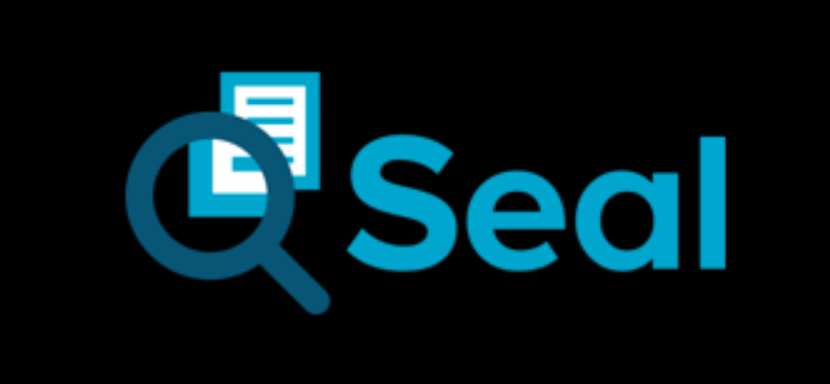
Understanding Search and Extraction in Contract AI is a First Step in Legal Business Transformation
By David Gingell, CMO at legal AI company Seal Software
The search and extraction of data using artificial intelligence (AI) is among the most under-appreciated aspects of the analytics process, but it is also the foundation on which contract analytics is built.
Understanding contract AI, which is often seen by lawyers as daunting, is an instructional step in setting aside fear of failure and embracing the benefits of AI contract analytics in the legal sector.
Not only does AI produce insight into these documents, but it has the potential to transform the way we do business. As companies look to build a larger competitive strategy around the convergence of people, process, and technology, the answers are in the contract data – it’s just a matter of applying AI to get them out.
Lawyers can use AI methodologies to replicate human actions with more efficiency and efficacy, applying it to massive document stores for due diligence reviews in mergers and acquisitions. They can analyze the content of contracts to find the total value of third-party agreements, reveal hidden risks, and identify specific clauses and potential outliers.
Bringing contracts into scope
When companies first begin the process of using contract analytics, they must bring these instruments into scope, and then, once under management, an optimized search engine can be applied to surface the contract data that is most important.

Firstly, there are those who know exactly where all their contracts are, generally because they have implemented some form of a contract lifecycle management (CLM) solution, and use it as a system of record, or source of truth. According to research firm Aberdeen, best-in-class companies have more than 75 percent of their contracts in a searchable repository, compared to all others who have only about one-third.
In the second and most common camp, are those companies who can point to where the majority of their contracts are, usually spread across multiple CLMs, cloud storage devices, file shares, or in other enterprise applications like DocuSign and Salesforce. These companies are not entirely convinced they know where all of their contracts are located but can account for most of them and the most important ones.
Finally, there are organizations that have a weak handle on where their corpus of contracts resides, with many still in physical paper format.
Determining where contracts live
Regardless in which camp a company resides, contract search and identification is the process by which analytics tools are applied to an entire contract corpus to find the contract themselves. Consider that most enterprises have thousands upon thousands of contractual documents that are often spread out across multiple departments, locations, and systems. Performing a manual review of contracts in the data-driven organization, which is just about every large company, is simply not practical.
While humans are still essential to set up the system and ask the right questions, AI makes it possible to quickly search for and analyze contracts to determine if they are in fact contracts in the first place.

However, each contract needs to be readable in order for an AI engine to work, and so if the contract is not machine-readable, such as with an image file, solutions like those from Seal Software will use optical character recognition (OCR) to create a machine-readable version. The few remaining files that the system cannot render machine-readable, due to low quality or other factors, are tagged for manual review.
Speeding up the process in this way eliminates costly errors which stem from misidentification of duplicates or missing files altogether. These AI techniques from document classification to object recognition, which are being used by companies like Nokia to achieve extraordinary accuracy in their procurement and legal functions, keep getting more accurate the more they are used through a process called machine learning.
Eliminating costly manual processes
The results of this is a single point of access for all contracts which simplifies searching and readies the contract data as a source for business intelligence. At this point, contract search and analysis allow some core logic to be run against the corpus. Sophisticated extraction processes help to identify topics, sub-topics, clauses, sentences, and words. These can be keywords, wildcards, proximity and other Boolean searches, and approaches in natural language processing (NLP) and machine learning make it possible for lawyers to intuitively construct such queries.
In the past, reviewing each contract to find those that contain specific terms or clauses required knowledgeable legal teams to pour over thousands or even millions of files, consuming legal budgets, tapping scarce resources, and ultimately slowing the business.

Think of the procurement department of a Fortune 1000 company, such as P&G which has more than 75,000 suppliers, with at least one MSA and dozens of related documents. When they need to get an accurate view of some specific contractual data, such as net payment terms or contract renewal dates, there really is no way to consistently, accurately, and scalably extract that data through a human review process.
Moreover, when circumstances change or new considerations come to light, it’s necessary to restart the document review all over again since it’s impossible to know what data may be needed in the future
Transforming legal business
Technology can transform the data extraction process from a costly, repetitive, and manual process to an automated AI-assisted process. While there is a lot of hype about the capabilities of AI to transform so many of legal business functions, with as much as 80 percent of business transactions governed by contracts, they represent both a source of operational risk as well as an opportunity for organisational excellence.
Searching and extracting maximum value from these agreements means turning contractual data into intellectual property, and its strategic utility demands knowledge of the automation tools and services necessary to do so.
Artificial intelligence is already disrupting the legal sector which has, in many ways, previously relied on labor-intensive processes to remain competitive. AI has not just the potential but is genuinely changing how lawyers and legal departments work.
We see proof every day at Seal Software that it frees up lawyers to take on more complex – and arguably more important – tasks such as negotiating deals and advising clients. The first step to a competitive mindset in the age of digital innovation is to understand the fundamentals of AI-driven contract search and extraction in practice.
[ Artificial Lawyer is proud to bring you this sponsored thought leadership article by legal AI company Seal Software. ]
The simplicity with which this article explains what AI etc is all about and its advantages should be a model for others. Those in the business do not always appreciate that those who are not do not necessarily think like them.
UK practitioners who deserve it should be awarded “Conveyancing Changemaker Champ1on” logos for their websites from a respected body